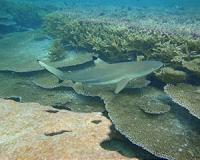 |
Southampton UK (SPX) Mar 14, 2011 caused extinctions of creatures living at bathyal (1,000-4,000 metres) and abyssal (>4,000 m) depths. These extinctions were apparently followed by re-colonisation of the deep sea by shallow-water species, which subsequently evolved into the species well adapted for life in this new challenging environment. "Many deep-sea species have close relatives living in shallow, relatively warm water, but how shallow-water species were initially able to cope with the huge hydrostatic pressures of the deep ocean is poorly understood," explained Dr Sven Thatje of the University of Southampton's School of Ocean and Earth Science (SOES) based at the National Oceanography Centre, Southampton. Another potentially obstacle to vertical migration from the surface to the deep ocean is that of temperature. Most shallow-water species alive today are used to living in relatively warm water rather than the frigid temperatures of the deep sea. One possibility is that re-colonisation occurred during geological periods when deep-sea temperatures were warmer. Alternatively, species living in the colder waters of polar regions may have been pre-adapted to life in the deep sea. To address these issues experimentally, Thatje and his collaborators turned to a model species, the variable shrimp (Palaemonetes varians). The species is native to Western Europe and lives in shallow, brackish habitats. It tolerates low oxygen conditions and wide fluctuations in temperature and salinity, and has potential for commercial aquaculture. "P. varians is closely related to deep-sea shrimp species living around hydrothermal vents - 'black smokers' - in the Atlantic, making it an excellent case for comparison with these deep-living shrimps," said Andrew Oliphant, lead author and PhD student at the graduate school at the National Oceanography Centre, Southampton. The researchers collected variable shrimps from Lymington salt marshes (England) and from Bay of Mont Saint Michel (France) and acclimated them to life in the laboratory. They then tested the ability of adult shrimps to withstand the effects of various pressure and temperature combinations, measuring both oxygen consumption and behaviour. The water temperature experienced by variable shrimps in their natural habitats varies seasonally, dipping to around 0C in the winter, with a summer high of around 30C. The researchers found that the shrimps were more sensitive to pressure at lower temperatures. Nevertheless, at all temperatures between 5 and 30C the shrimps tolerated hydrostatic pressures far beyond what they would experience in shallow water. The highest pressure tested was 30 megapascals (MPa), which is equivalent to approximately 4,351 pounds per square inch or 3,000m water depth. For comparison, in their natural habitat, variable shrimps live at a hydrostatic pressure of around 0.1 MPa equalling atmospheric pressure. "We have demonstrated that P.varianscan tolerate temperatures and pressures similar to those experienced by their deep-water cousins living around hydrothermal vents," said Dr Thatje. "These physiological capabilities were probably inherited from an ancestral species shared by both shallow-water and related vent species." Oliphant, A., Thatje, S., Brown, A., Morini, M., Ravaux, J. and Shillito, B. Pressure tolerance of the shallow-water caridean shrimp, Palaemonetes varians, across its thermal tolerance window.J. Experimental Biol.214. 1109-1117 (2011). doi:10.1242/jeb.048058
Share This Article With Planet Earth
Related Links National Oceanography Centre Water News - Science, Technology and Politics
 New UF Study Shows Some Sharks Follow Mental Map To Navigate Seas
New UF Study Shows Some Sharks Follow Mental Map To Navigate SeasGainesville FL (SPX) Mar 11, 2011 A new study led by a University of Florida researcher uses tracking data of three shark species to provide the first evidence some of the fish swim directly to targeted locations. Researchers found tiger and thresher sharks showed the ability to orient at large distances, with tiger sharks swimming in direct paths at least 4 miles away and reaching specific resource areas about 30 miles aw ... read more |
|
| The content herein, unless otherwise known to be public domain, are Copyright 1995-2010 - SpaceDaily. AFP and UPI Wire Stories are copyright Agence France-Presse and United Press International. ESA Portal Reports are copyright European Space Agency. All NASA sourced material is public domain. Additional copyrights may apply in whole or part to other bona fide parties. Advertising does not imply endorsement,agreement or approval of any opinions, statements or information provided by SpaceDaily on any Web page published or hosted by SpaceDaily. Privacy Statement |